The F-22 Raptor Facts: 30 Things to Know
The F-22 Raptor Uses Thrust Vectoring For Superior Maneuverability
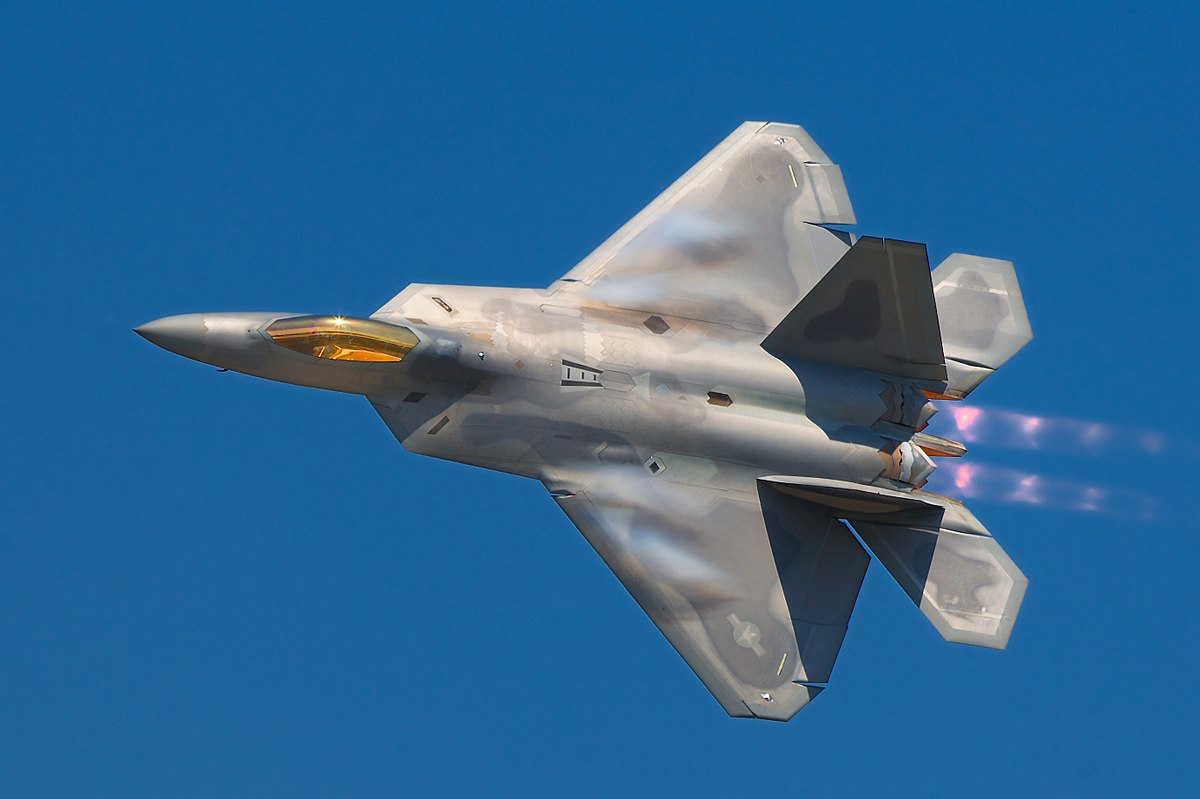
A successful fighter jet allows the pilot to maximize his or her tactical potential while removing the workload when possible. And the F-22 Raptor takes that to the next level. In what is touted as “super-maneuverability”, the F-22 has a variety of mechanisms built into every inch of the plane to make it as agile as possible. The engines, a pair of Pratt & Whitney F119s, varies its thrust direction by 20 degrees which is referred to as thrust vectoring. What does this accomplish? Well, it allows the plane to make more precise high-g turns, perform stall maneuvers without stalling the aircraft and point the plane at targets directly. All of these capabilities put the F-22 at an advantage to other lesser fighters it may come across in the air.
The F-22 Can Carry A Large Payload of Weapons

The F-22 is capable of holding a large quantity of weapons in a stealthy manor. However, the variety of weapons compatible with the aircraft leaves is not vast. It’s true that the Raptor can carry air to air missiles or air to ground missiles, but the size and type are pretty specific. Currently, the F-22 is designed to hold short-range AIM-9 Sidewinder and medium range AIM-120 AMRAAM missiles for air to air combat. It can also hold a variety of JDAM bombs for air to ground combat.
27th Fighter Squadron Were First To Receive F-22s

Despite beginning development in the early 1990s, it wasn’t until December 15, 2005 that the F-22A Raptor achieved Initial Operational Capacity. The road to get there was long and arduous from acquisitions, developments, testing, and training among a variety of different providers and collaborators. The first combat-ready F-22 Raptors were sent and assigned to the 27th Fighter Squadron based out of Langley, VA. The Squadron is comprised of 12 aircraft that act as one deployable package, capable of both air to air and air to ground combat. This same Squadron completed the first mission using F-22s in Syria in 2014.
27th Squadron Raptor Gets Iconic “Maloney’s Pony” Treatment
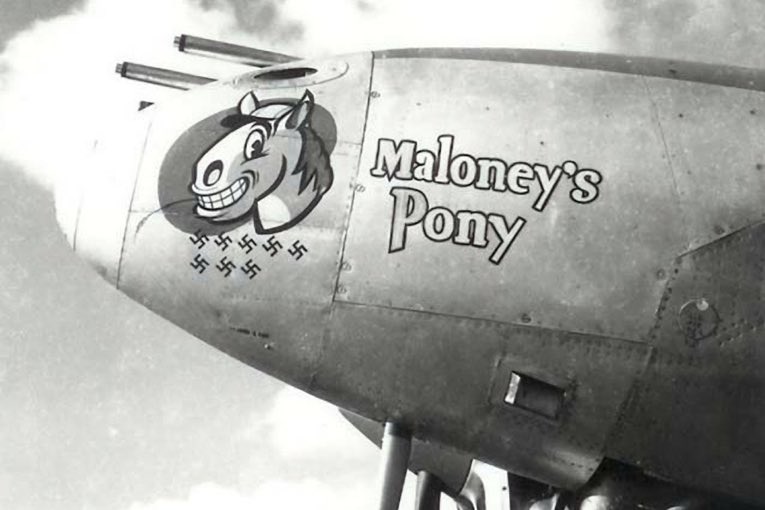
Within the 27th Fighter Squadron, one Raptor has an interesting insignia adorned on its fuselage. The story behind why is a testament to the way the U.S. Air Force honors the brave men who have held their positions before them.
Maj. Thomes E. Maloney was a member of the 27th Fighter Squadron during World War II and he was the Squadron’s highest scoring Ace at the time. In 1944, during a strike mission over France, his P-38 Lightning named “Maloney’s Pony” crashed into the Mediterranean Sea. He managed to survive the crash and make it to shore. However, once ashore he stepped on a mine during his search for the Allies. Though badly injured, Maloney continued his search while evading the enemy for another ten days before a French farmer rescued him.
In honor of his heroic plight, the 27th Fighter Squadron names an aircraft in the fleet “Maloney’s Pony”. When the Squadron switched to the F-22s, they felt the insignia might hinder the stealth objective of the fleet. But in 2011, it the tradition restored. The Raptor number 09-0174 received the honor and led the F-22s first mission into Syria in 2014.
Both Lockheed and Boeing Made Significant Contributions To The F-22 Design
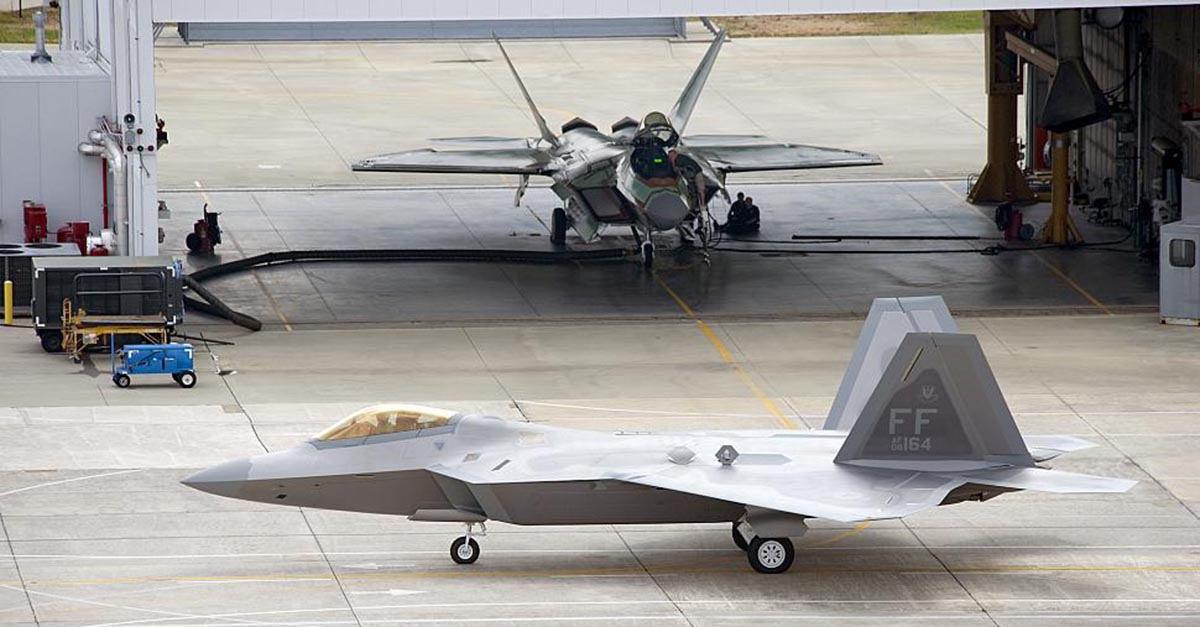
Lockheed Martin is usually the name you hear closest associated with the F-22 Raptor. However, Boeing deserves a great deal of recognition for their contribution to the record-breaking jet as well.

Lockheed Martin won the main contract to develop the F-22 and is in charge of project management. Their Aeronautical Division, based out of Marietta, GA, is responsible for the nose section, cockpit, stabilators, fins, and landing gear, among other things. Their Tactical Aircraft Systems division out of Fort Worth, TX, took care of most of the internal systems, including navigation, electronic warfare, communications, and weapons support.
One of the coolest F-22 facts is that Boeing was hired to develop the wings of the F-22. Additionally, they developed the aft fuselage, avionics integration and several electronic systems such as life support and fire protection and a number of training systems. The huge cost of F-22s is a source of criticism and some believe employing a variety of producers contributed to the unsustainable price tag.
F-22 Boasts Unique Cockpit Elements Like NVG and HMS

The F-22 may be the most intimidating fighter jet in existence, so it comes as no surprise that the cockpit would be decked out in the latest technology. Previously, fighter jets contained automated sensor operators that do the tactical work for the pilot. But the F-22 optimizes the maximum potential of both the computer technology and the pilot’s tactical skills – leaving the tactical decisions up to the expert in the driver’s seat. The cockpit is the first compatible with baseline Night Vision Goggles (NVG) and the canopy contains the largest piece of polycarbonate in the world. It’s built to hold a single pilot with an ACES II ejection seat and upgraded life support systems. Finally, the cockpit is compatible with Helmet Mounted systems (HMS) which allow for better and more consistent focus while operating the aircraft. Of all the F-22 facts, this might be the most important to the pilot him/herself.
First Combat Flight Wasn’t Until 2014
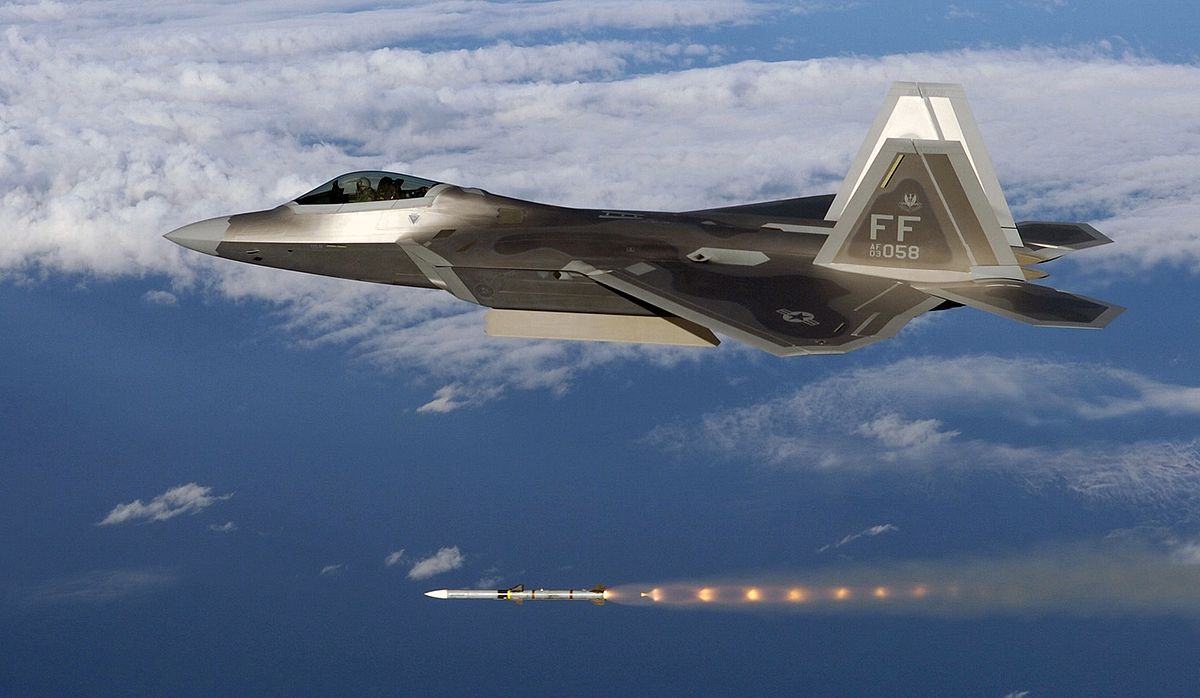
While the F-22 first began development in the late 1990s, you may be surprised to learn it didn’t complete its first combat mission until 2014. The mission involved targeting and striking an ISIS command and control building in Syria. According to news reports, the mission was a success. However, since it is fully operational since 2005, so why wasn’t the Raptor used in combat before? According to the Air Force, the high tech (and extremely expensive) jet just wasn’t necessary. Some may question if the reported oxygen issues perhaps were to blame. One of the surprising F-22 facts is that between 2008 and 2012, more than 24 reports surfaced of pilots suffering from oxygen deprivation symptoms while flying the F-22. It’s hard to know for sure, but its good to have proof these aircrafts can do their job when needed.
First Official Flight of the F-22 Was in 1997

In September of 1997, the F-22 took its first flight in front of the hundreds of people that designed, engineered and built it over the years. A lot of factors led up to its first flight – 44,000 wind tunnel test hours, six years of research and development, and countless materials samples, to name a few. Paul Metz piloted the F-22, followed by Jon Beesley in the safety chase F-16 aircraft. Beesley put the F-16 in afterburner just to keep up with the F-22, a testament to this new, one-of-a-kind fighter. They completed a fifty-eight minute route around North Georgia, and Metz tapped the breaks upon landing, making the F-22 do a ceremonial bow to the excited crowd. This would be the first of nearly 3500 test flights before the F-22 became operational in 2005. These F-22 facts are compiled by Military Machine.
F-22 Cost Per Hour is Nearly $67,000
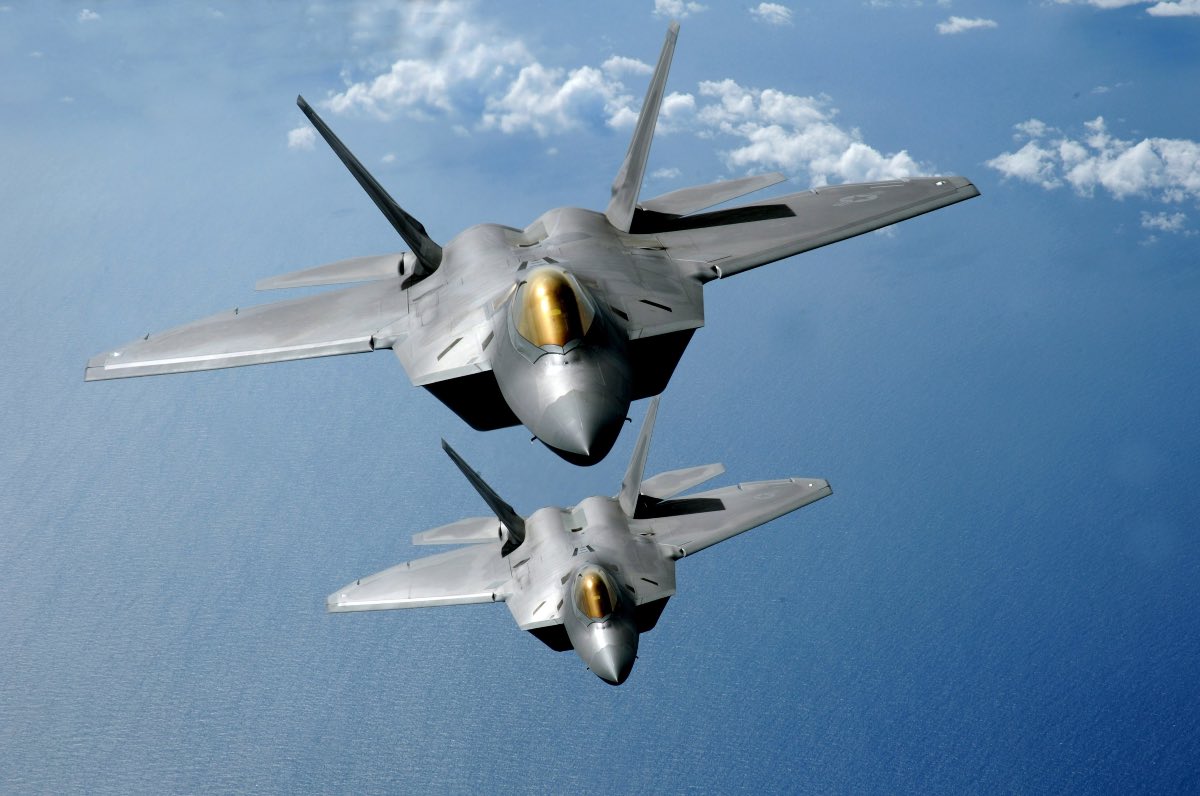
The costliness of the F-22 Raptor is one of the aircraft’s biggest criticisms. In 2013, TIME Magazine reported the cost per hour to operate the F-22A was $68,362. Now, that’s a lot, but not the most expensive on the list of military aircraft. For example, Air Force One was listed at $161,591 per hour. So what does this number include? This number means the cost of ownership, including modifications over the lifetime of the jet. In 2014, the F-22 fleet required over 40 hours of maintenance per flight hour. It seems that as the fleet has aged, the maintenance requirements have increased considerably. The lifecycle cost of one F-22 Raptor is an estimated $334 million. One unit costs $150 million.
The F-22’s Ferry Range is Nearly 2,000 Miles

The F-22 is built for speed and stealth, but how does it stack up in regards to flight range? The US Air Force lists the ferry range just shy of 2,000 miles. While that won’t take it from the US to the Middle East without refuel, that’s still a pretty impressive range for a jet supercruising through the sky. The US has several options to keep its Air Force fleets fueled up without ever having to touch the ground. It may surprise you that these tactics have been around since the 1950s. KC-135 tankers carry up to 200,000 pounds of transferrable fuel and connect with jets in flight to gas them up on the go. They reach altitudes of up to 50,000 and speeds of over 500 mph, so the jets they service can continue their mission, essentially uninterrupted.
An Array of Incidents and Issues Plague the F-22
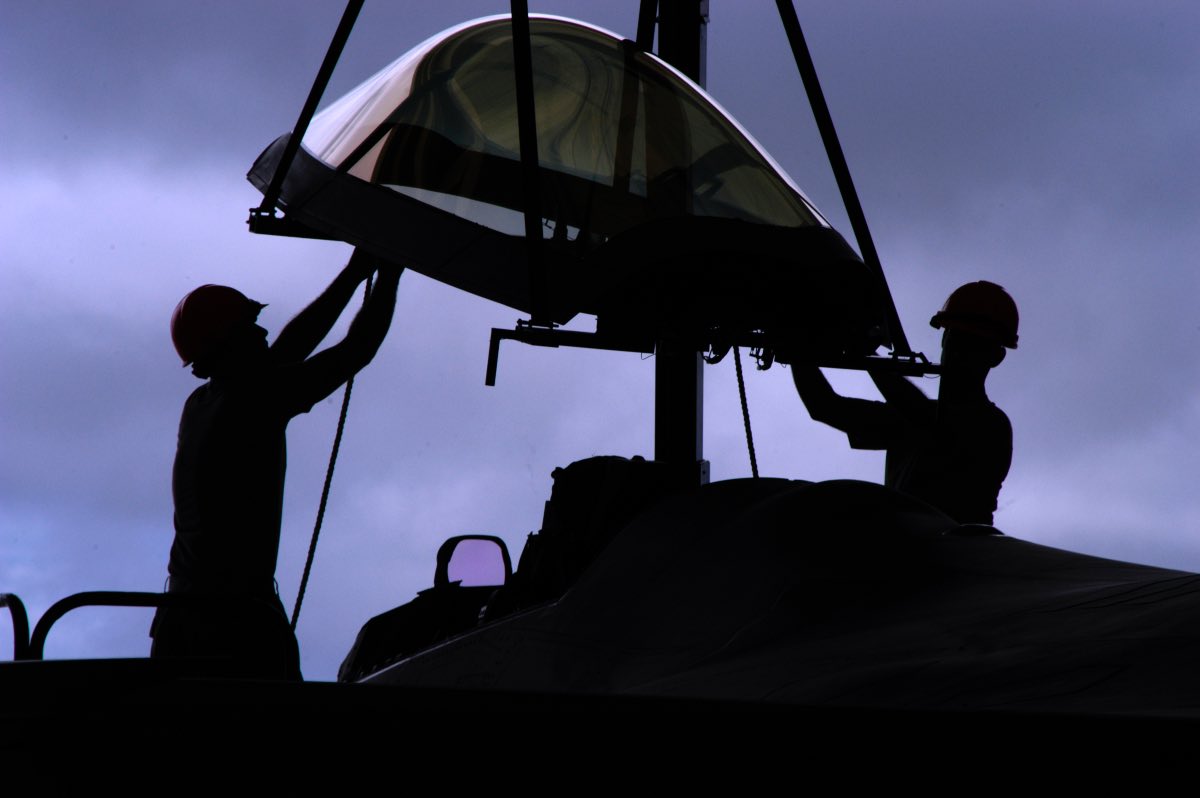
The development of the F-22 has its fair share of incidents. Beginning in 2008, pilots of the F-22 reported experiencing hypoxia-like symptoms while flying the aircraft. Hypoxia occurs when there is a lack of oxygen to the brain and symptoms include confusion and shortness of breath. It’s especially concerning for pilots as it can lead to poor judgement, causing them to make tactical decisions they normally wouldn’t. One fatal crash in Alaska occurred during a training mission when a malfunction caused the oxygen supply to the cockpit to be cut off. It is believed that due to the lack of oxygen. The F-22 fleet was entirely grounded for five months in 2011 to investigate the oxygen issues. The F-22 fleet lost two more planes in one day in 2012. One was due to pilot error, and the other a malfunction in the plane. Luckily, both pilots safely ejected without harm.
Sixth Generation Fighter May Come Next
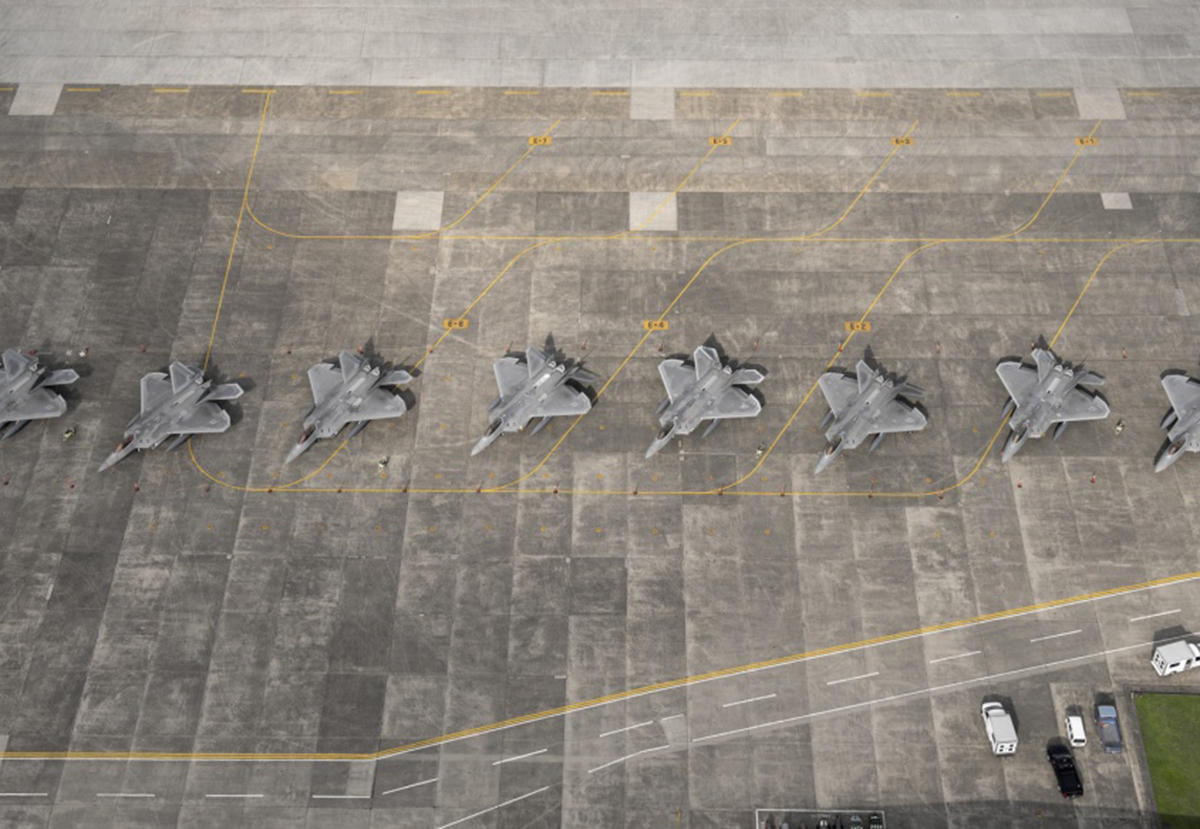
With an approximated cost of $140 million each, how long should a single F-22 be able to last? Well, according to Lockheed Martin, the F-22 will last up to and potentially beyond 40 years. The Government Accountability Office estimates that fixing and flying the F-22s throughout their lifespan will cost just shy of $60 billion dollars. The F-22 conceived in the 1980s, so the objectives required for a state of the art air defense vehicle in todays’s military environment are now somewhat disconnected from the Raptor. Which is where the idea for the sixth generation fighter came into play. The sixth generation fighter will have a longer lifespan and be more adept to today’s military challenges. However, if anything is learned from the development of the F-22, its that the longer it takes to develop the more likely it is that the military landscape will change by the time it becomes operational. These F-22 facts are compiled by Military Machine.
The Raptor Stealth Factor is Incognito but Not Invisible
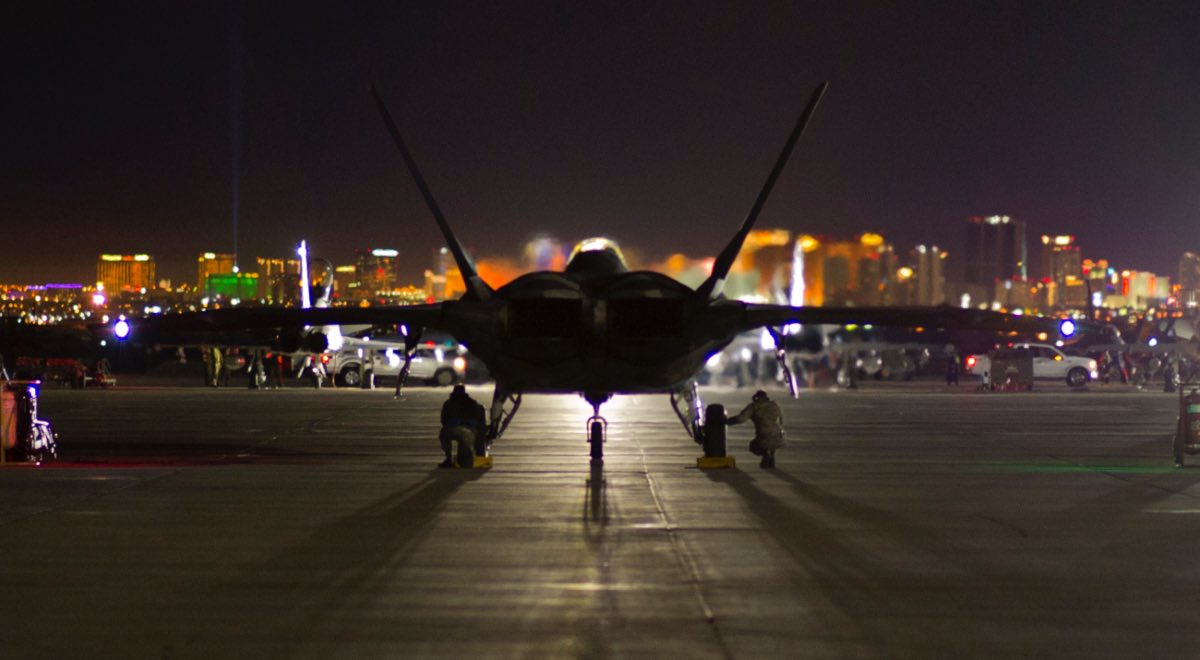
Of all the F-22 facts, the F-22’s stealth was a key feature in its design. Developers were eager to figure out a way for the aircraft to go largely undetected on enemy radar. By incorporating numerous curves into the design of the air frame, radar beams are bounced off in all directions instead of back to the radar source. Furthermore, because the main wings and the rear wings exactly line up, it also appears much smaller on radars. The result is a blip on the radar about the size of a bumblebee. Small, yes, but not invisible by any means. As of recent, China has claimed to be able to track the F-22 on radar fairly easily. Whether or not its true remains to be seen but as radar technology becomes more sophisticated, improvements will have be made to protect these expensive jets.
F-22 Was Built for Air to Air but Capable of Air to Ground Combat
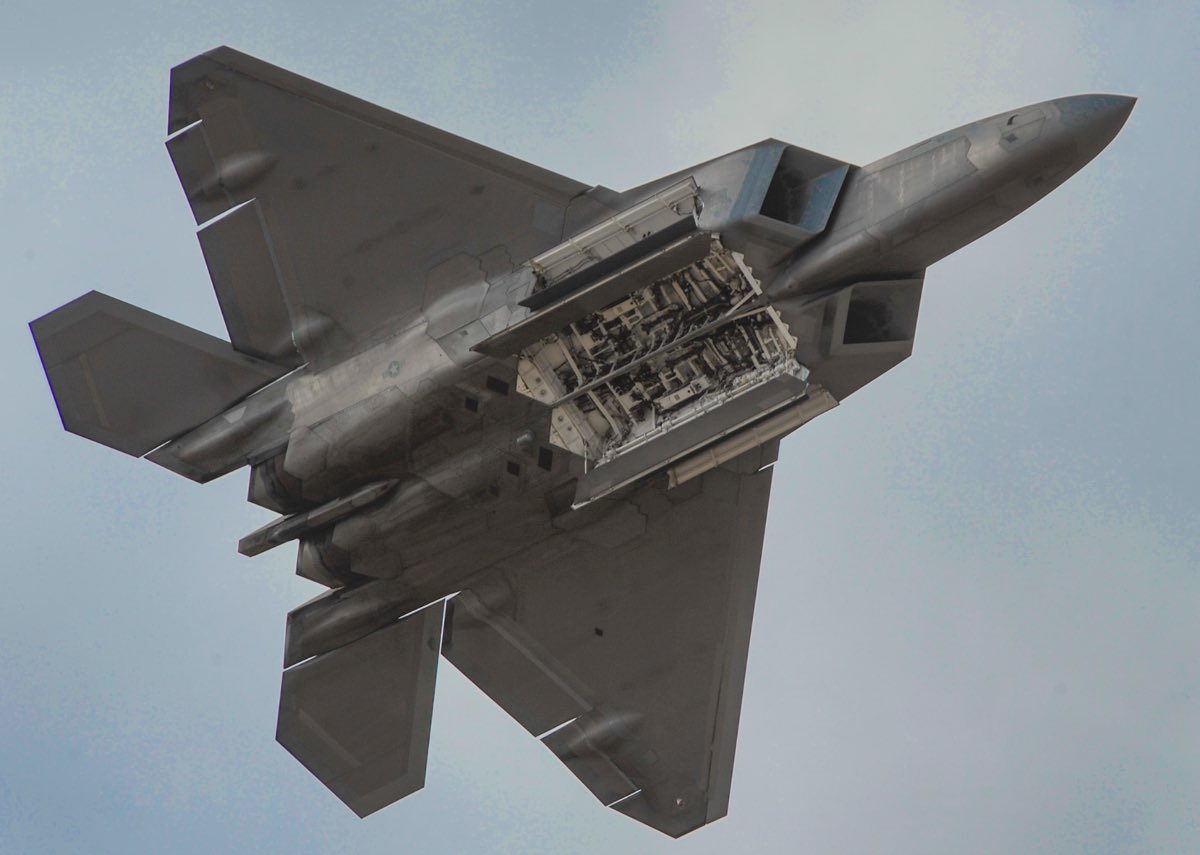
The F-22 is a replacement for the F-15 Eagle and the F-16 Fighting Falcon. As such, it has capability for both air to air combat and air to ground combat. Although most would say its specialty is in air to air superiority. Ironically, its first use in combat was an air to ground mission in 2014 in Syria where it took out an ISIS related target in precise and scrupulous fashion. The F-22 carries a very wide array of air to air missiles within its weapons bay but is more restricted when carrying air to ground missiles. So, while the F-22 can do both, the US Air Force felt there should be another cheaper, more multipurpose aircraft to perform routine missions and air to ground combat. The F-35 Lightning II was then put into production to save the F-22 for the advanced air to air conflict it was built to dominate.
F-22 Is Strictly for USA Military Forces and Cannot be Exported
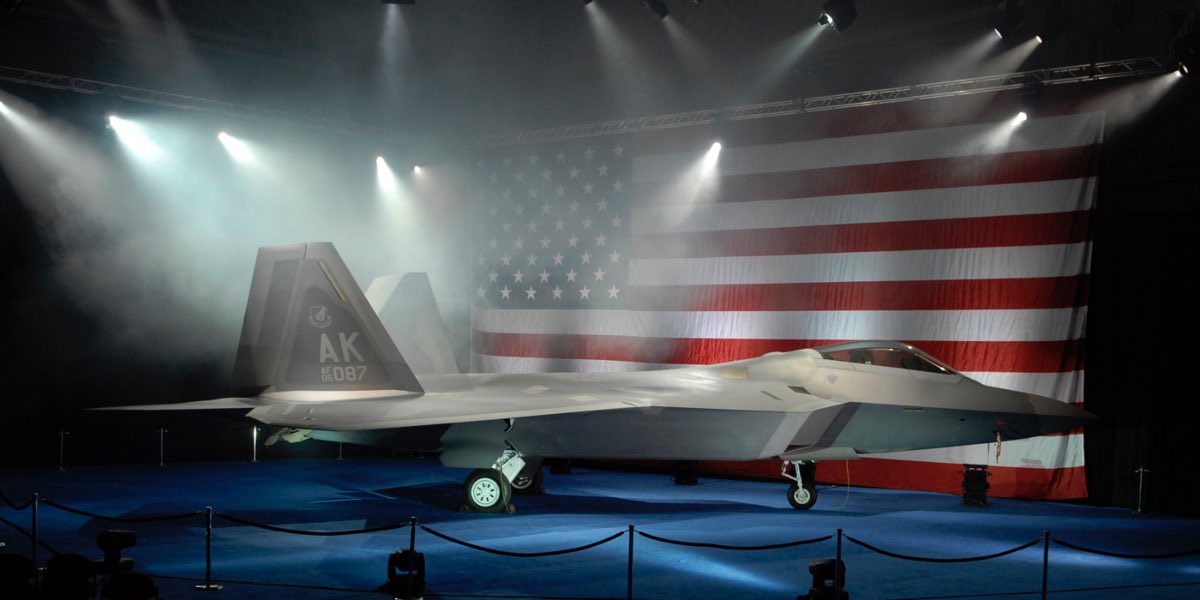
With only 183 F-22 Raptors in existence, it may be surprising to learn how spread out they are. Not only around the US, but in overseas air bases as well. Within the US, Raptors are present in Virginia, Hawaii, Alaska, New Mexico and Florida. They are also located at bases in the Middle East and a few were recently sent to Japan. There is actually a ban on exporting any F-22s out of American hands in order to protect the stealth technology and unique features it contains. The F-22 remains one of the US Air Force’s most closely held secrets.
AESA Radar Is A Key Stealth Element
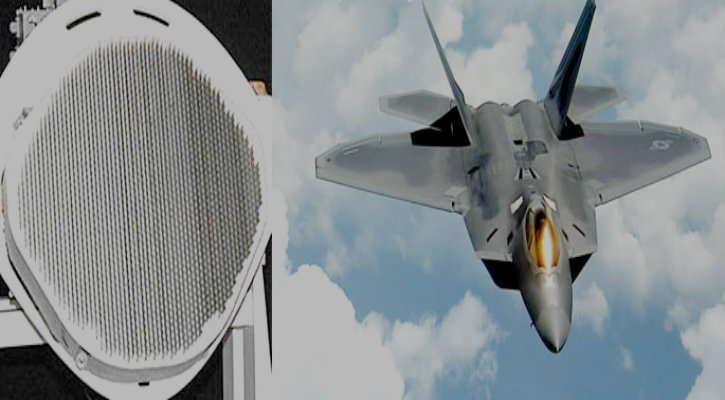
The F-22 Raptor is renowned for its stealth, but how exactly does it achieve it? One of the contributing factors is what is known as AESA or Active Electronically Scanned Array radar. This is just a component of the larger radar system known as AN/APG-77 developed by Northrop Grumman and incorporated into all F-22 Raptors. The beams emitted from this high performance radar are “agile frequency” which make it difficult for the enemy to spot or detect them. It has a low radar cross section and target detection, allowing the F-22 to gain what is referred to as “first look, first kill” capability. As you might expect, the producers of these radar systems are always eager to improve their creation and it is expected that similar systems in the near future will incorporate electronic warfare, among other upgrades.
F-22 Facts – Weaponry is Located Within The Aircraft

The F-22 Raptor’s primary weapons are air-to-air missiles, but it does have other possible weapons configurations depending on the mission of the aircraft. The design of the weapons bay is “clean” meaning that everything is carried within the aircraft rather than stored externally. This configuration was important in maintaining the F-22s stealthy reputation by reducing drag and improving range. The main armament, which would be an AMRAAM for air-to-air missions or a JDAM for air-to-ground missions, is carried underneath on the Vertical Eject Launcher known as AVEL, and the entire launching process takes mere seconds to complete.
The Raptor is also capable of carrying up to 5,000 pounds on its underwing hardpoints. For ferry flights, these hardpoints would normally carry four 600-gallon fuel tanks for extra range. When fuel tanks and extra weaponry are needed, the F-22 can be loaded with two fuel tanks and four missiles under the wings.
F-22 Has Active Missions in the Middle East
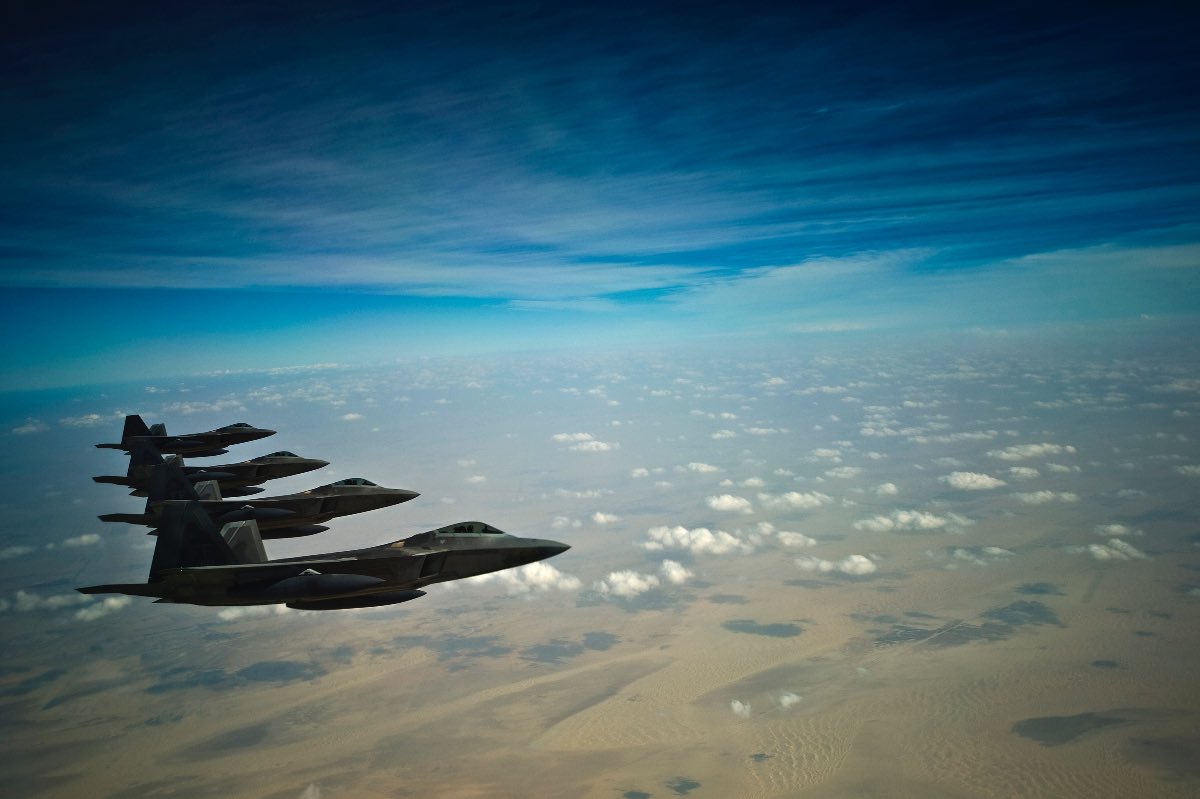
The F-22s haven’t seen quite as much action as expected given their capabilities and cost of development, but they have provided valuable service nonetheless. It’s main duty to this point is intelligence gathering and surveillance of enemy targets. Between 2014 and 2015, F-22s flew over 200 sorties in Syria and delivered 270 bombs throughout around sixty locations. They also were involved in their first close air support mission when an air strike located close to friendly forces called for the precision and quickness only the F-22 could provide. The F-22 isn’t always the most practical aircraft for combat missions, but the military is thankful to have it when the need arises.
F-22 Kill Ratios Speak For Themselves – 108:0
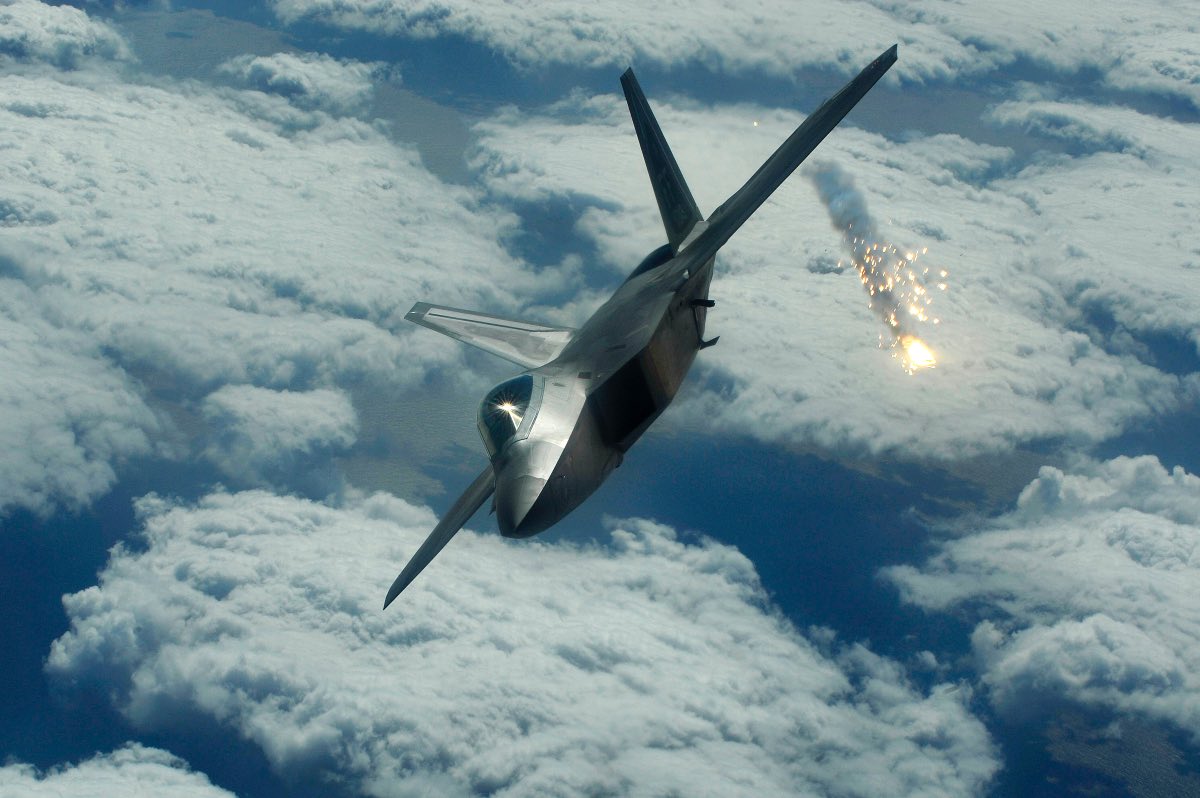
It’s important that state-of-the-art aircraft, such as the F-22, live up the hype that surrounds it. All this talk about specialized radars, stealth, and speed might make you ask what kind of accuracy all of these attributes create in an aircraft. Well, the F-22 does pretty well. When put up against an adversary such as the F-15, the F-22 had a 108:0 kill ratio according to reports out of the Exercise Northern Edge 2006. What does that number mean exactly? Compare it to the numbers the F-15 put out when up against a much less sophisticated aircraft, the F-5. It reported kill ratios of 8:1. The F-22 maintains good ratios when matched up to even the most advanced aircraft which can be attributed to all of the extremely specialized and unique technology it contains.
The Raptor Can “Supercruise” – Mach 1.5 Without Afterburners
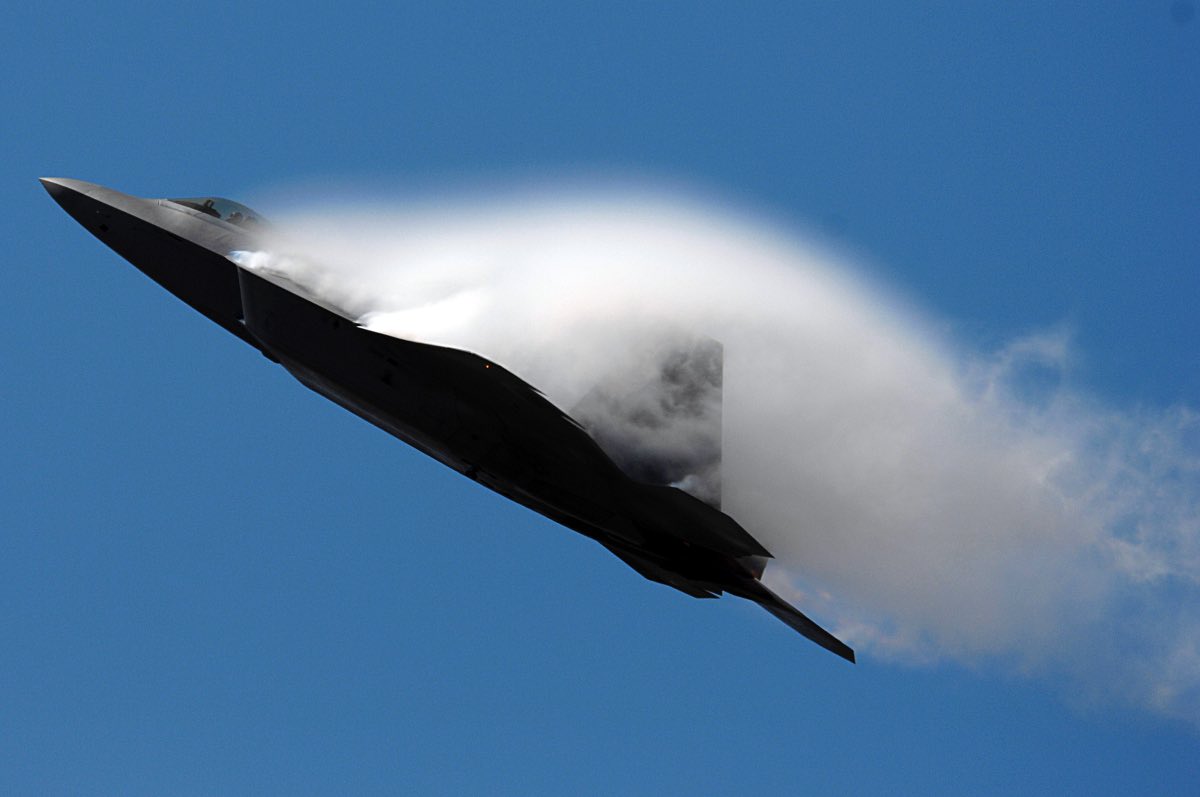
One of the F-22s most talked about features is its ability to “supercruise”. Aircraft that reach Mach 1 aren’t all the special in today’s air force environment, but what makes the F-22 a standout is that it can fly at Mach 1.5+ without using afterburners. Afterburners consume extremely high amounts of fuel and therefore will not allow most aircraft to sustain this speed. The F-22 Raptor is loaded with two Pratt and Whitney F119 engines that produce enough thrust to avoid the need for afterburners and send missiles flying farther and at higher speeds than normal fighters. Supercruise gets the F-22 in and out of combat quickly, and allows for long-range air patrols, buying more time over the enemy target. In fact, the F-22 is the only operational aircraft that, even when fully loaded with weapons, can achieve supercruise.
Some Question Its Usefulness in Small Wars
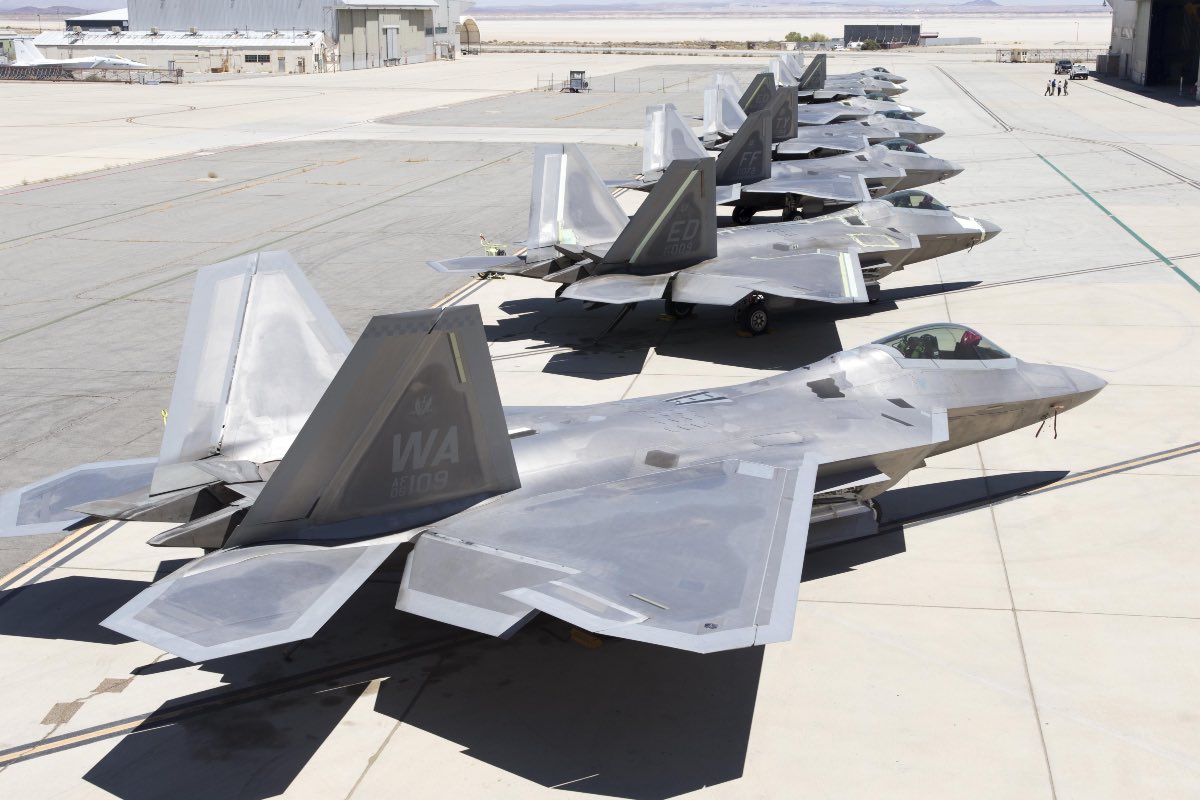
There is some criticism towards the F-22 and its use potential in “small wars”. Modern combat has been largely characterized by compact, moving targets that the F-22 wasn’t built to zone in on. While it is capable of launching GPS-guided missiles and comes equipped with SAR ground-looking radar, the F-22 Raptor is still heavily lacking in some of the optics and targeting technology found in combat helicopters and even the F-35. Further complicating the issue is its astronomical cost. Military leaders are left wondering whether it even makes sense to use these high dollar aircraft for any type of combat they weren’t specifically designed to dominate, limiting the use of the fleet over its lifetime significantly.
Other Countries Have Developed Their Own Versions of the F-22
After word of the F-22s superior capabilities as a fighter jet began spreading around the world, other countries began developing their own answer to combat this possible threat. Both China and Russia made their own versions of the Raptor.
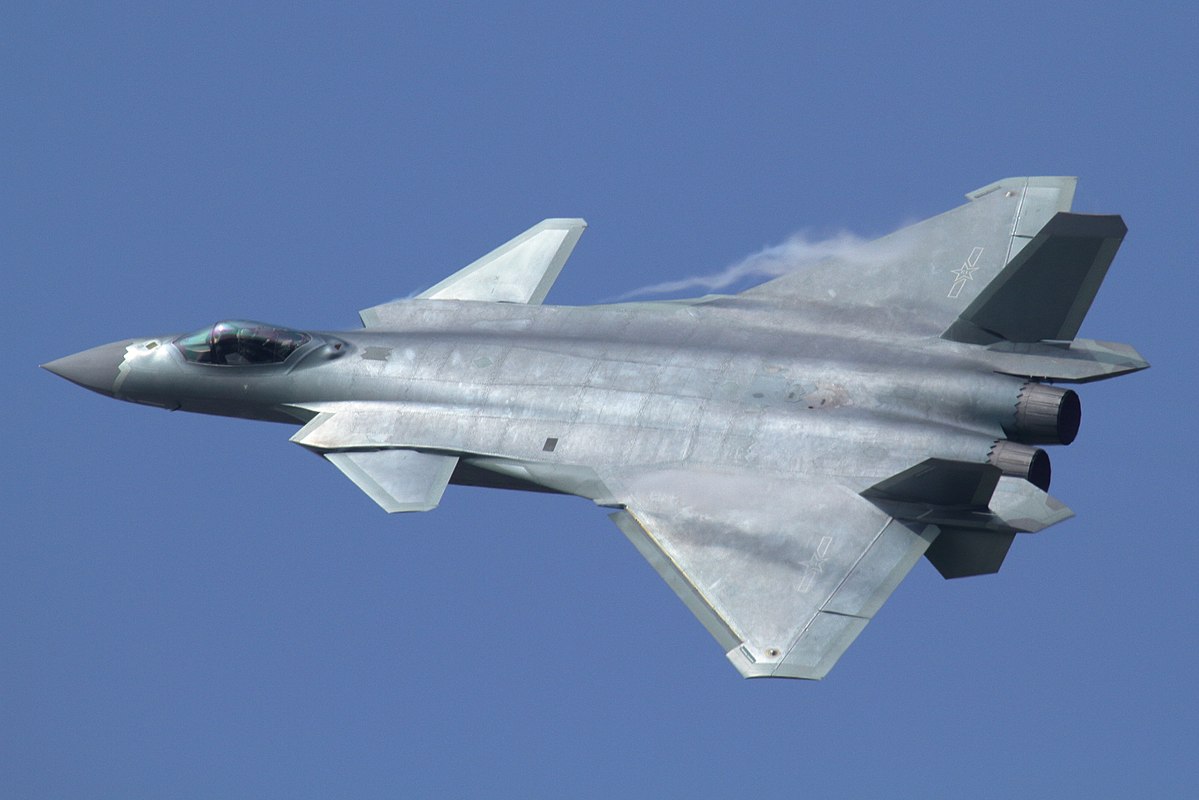
Chengdu Aerospace Corporation for the Air Force in China built a stealth, fifth-generation fighter jet called the Chengdu J-20. Its first flight was in 2011 but it’s not suspected to go operational until closer to 2020. The look of the aircraft resembles the F-22 with a wide fuselage, chiseled nose, and frameless canopy. The US government noted that the US should pay attention to the J-20.
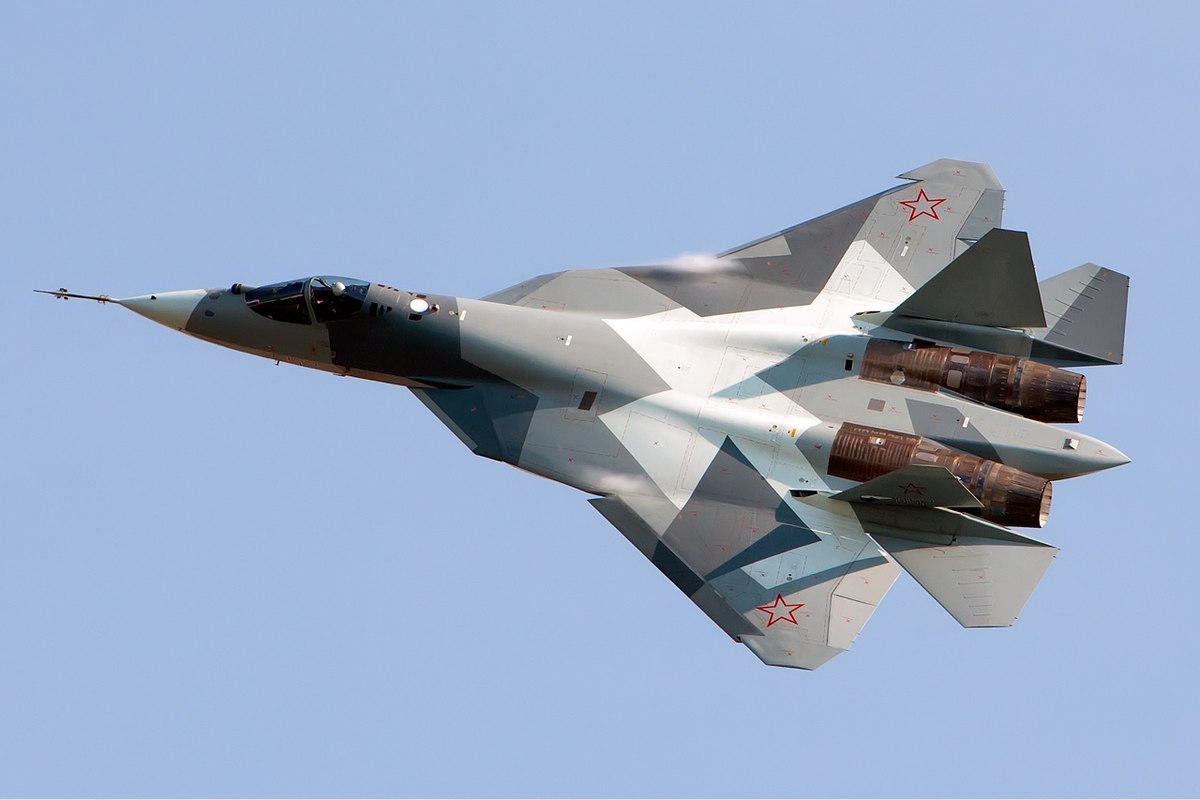
The Russian answer to the F-22 is the Sukhoi PAK FA and it is Russia’s first aircraft to integrate stealth technology. It is said to be engineered to have super-maneuverability, supercruise, and sensor fusion. Much like the US, Russia has encountered issues with the high cost of developing this high tech plane and has delayed and depleted the amount of jets to be built in the program.
F-22 Facts – It Has Upgraded HOBS Sidewinder Missiles
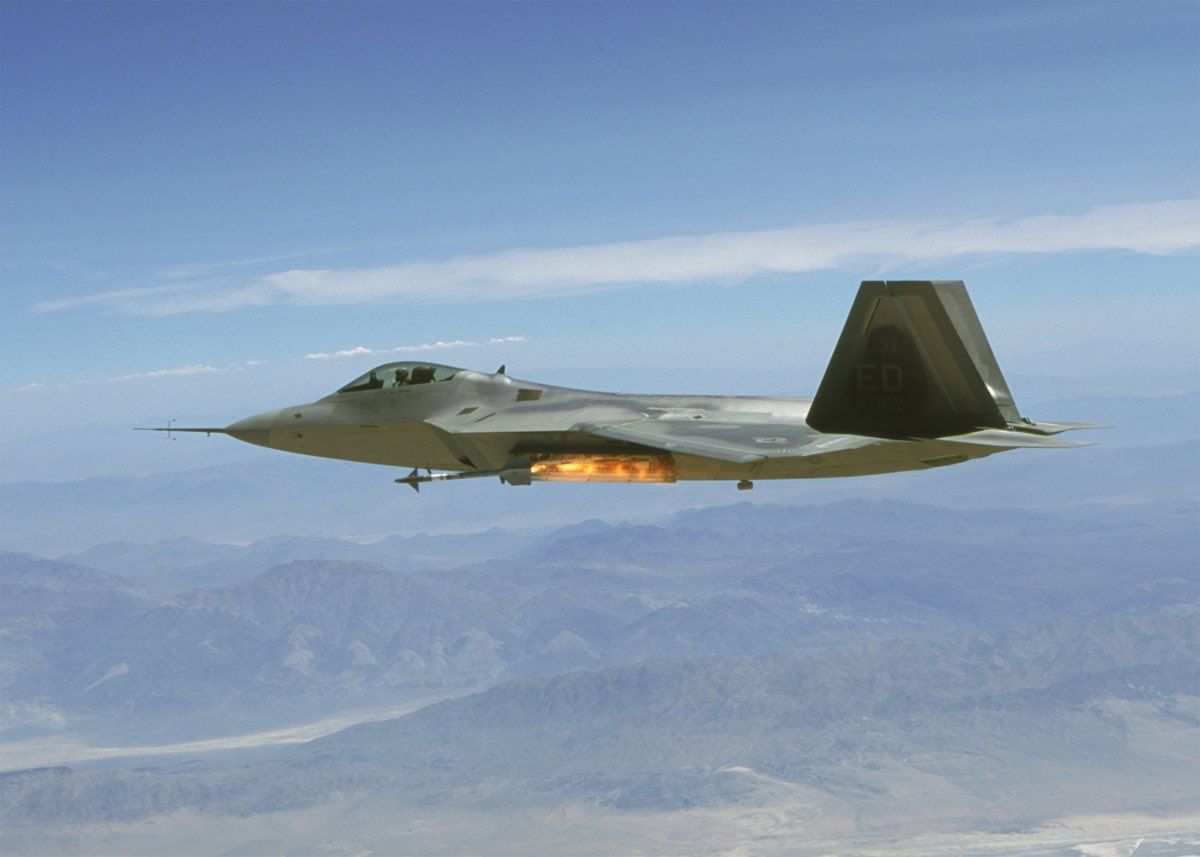
The F-22 has undergone a number of upgrades throughout its existence and one very important advance was announced recently. The latest upgrade enables the F-22 Raptor to utilize the AIM-9X Sidewinder high off bore-sight (HOBS), giving it a huge increase in visual range dogfight with an enemy fighter. Interestingly, the F-15 and F-16 have been stocked with this new HOBS Sidewinder for some time, however integrating it into the F-22 proved to be quite tricky. Due to the Raptor’s complicated avionics, updating the missile became a long and difficult puzzle for F-22 engineers. It’s finally been accomplished but there are still some kinks to work out which should be completed under the next upgrade: Increment 3.2B Hardware Upgrade. One of those kinks is that the software still displays the symbology for the old missile, forcing the pilot to make judgement calls to make up the difference.
A Helmet Upgrade 10 Years in the Making Will Make F-22 More Effective

Another upgrade the US Air Force is looking to make on the F-22 is the helmet technology for its pilots. In 2015, the USAF published a development schedule and requirements list to be completed by 2020. The helmet upgrades have been in talks for over ten years, but budget issues have repeatedly hindered the maturation of the project.
According to the requirements, the program will utilize the Gentex HGU-55/P helmet either in its current form or modified for F-22 Raptor pilots. One of the functions it will require is day and night cueing of weapons high off-boresight (HOBS) which will go hand in hand with the recently integrated AIM 9X Sidewinder HOBS missile. The helmet will also need to display video feeds and other data from these devices. The dedication to the helmet update is an encouraging sign that the USAF is getting behind the future of the F-22s again.
The F-22 Was Chosen Over The F-23 Thanks to Lockheed’s Ability To Read Its Customer
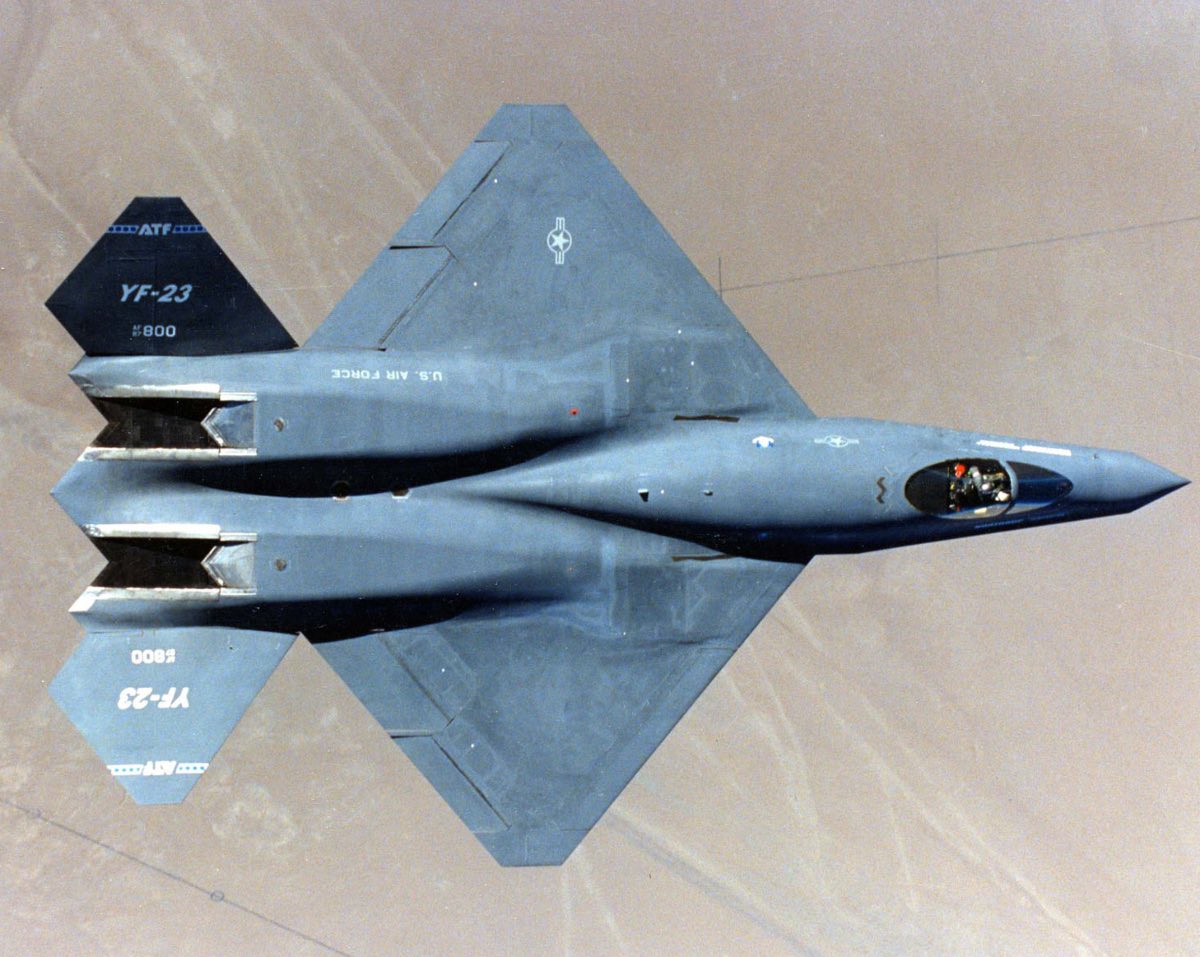
The F-22 may go down in American history as the most intimidating fighter jet ever, but there was another plane under development in the 1990s that could have surpassed it in quite a few ways. The Northrop YF-23 had better supercruise capabilities with its General Electric YF120 variable cycle engines, better range and, some said, a stealthier design. So why did the F-22 Raptor get chosen for production over the YF-23? A few major reasons contributed to this decision.
The first was Lockheed’s relationship with the Air Force versus Northrop Grumman’s (Lockheed’s was better). The second had to do with the US Navy. The Navy got to have a vote on the aircraft that was selected and they favored the Naval version of the F-22 over the F-23. And the final reason was Lockheed’s ability to hone in to what the Air Force wanted most – a maneuverable, agile fighter. The YF-23 had more stealth, speed and altitude, but the F-22 was described as a “super F-15” and nothing fit the bill better as far as the Air Force was concerned.
The F-22 and F-35 Compliment One Another in Combat
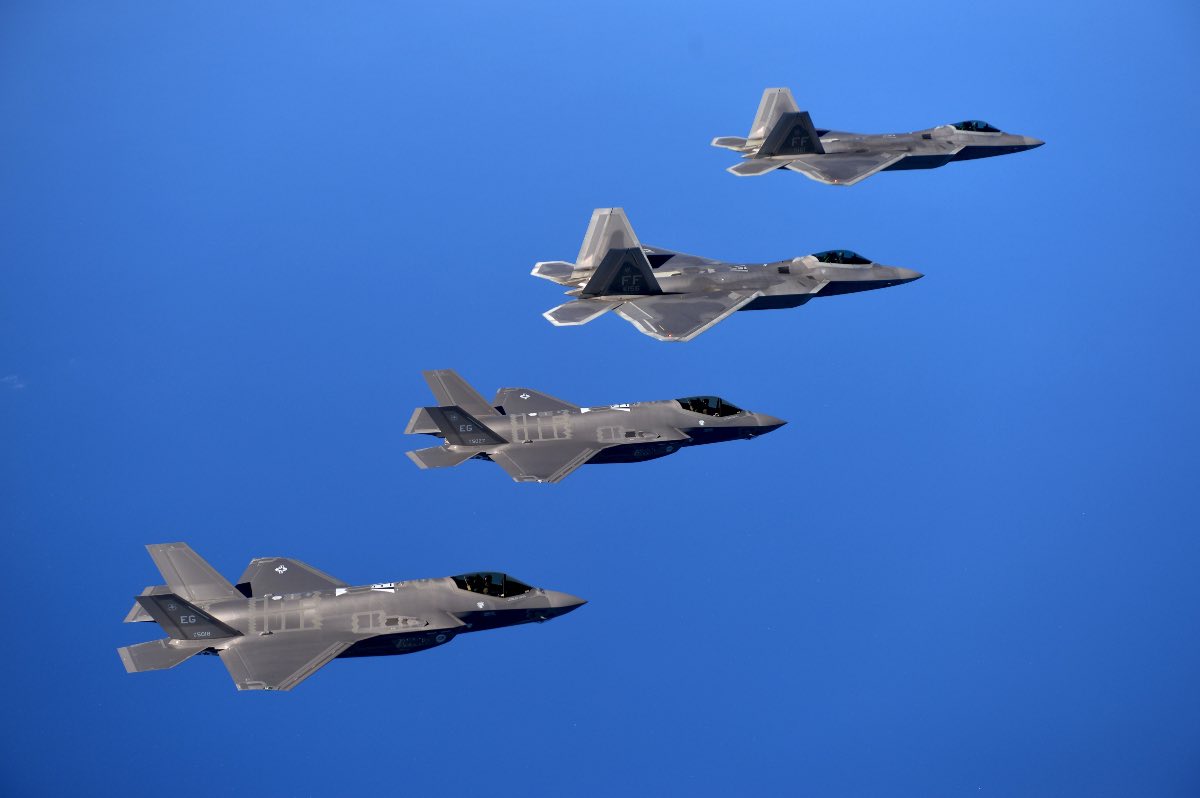
The F-22 and the F-35 are both used in today’s military landscape, but the F-35 probably gets a little more action than the Raptor. Why would that be? Well, the F-22 was designed for specific scenarios, engaging in combat with nations with advanced weapons and keeping our men in the skies safe. The F-22 has other capabilities but they weren’t necessarily optimized for that purpose, and with the F-22 being the expensive piece of equipment that it is, it was important to have another capable vehicle to carry out other missions and serve as a counterpoint to the F-22. That’s where the F-35 comes into play. The F-35 is tougher and better designed for air to ground combat as well as a number of other uses. It can take care of itself when it needs to, and it can work in tandem with the Raptor. Furthermore, the F-22 was built only for the US Air Force while the F-35 can be produced for our NATO Allies.
Bomb Shaped Insignia’s Are Placed on F-22 After Successful Combat Sorties
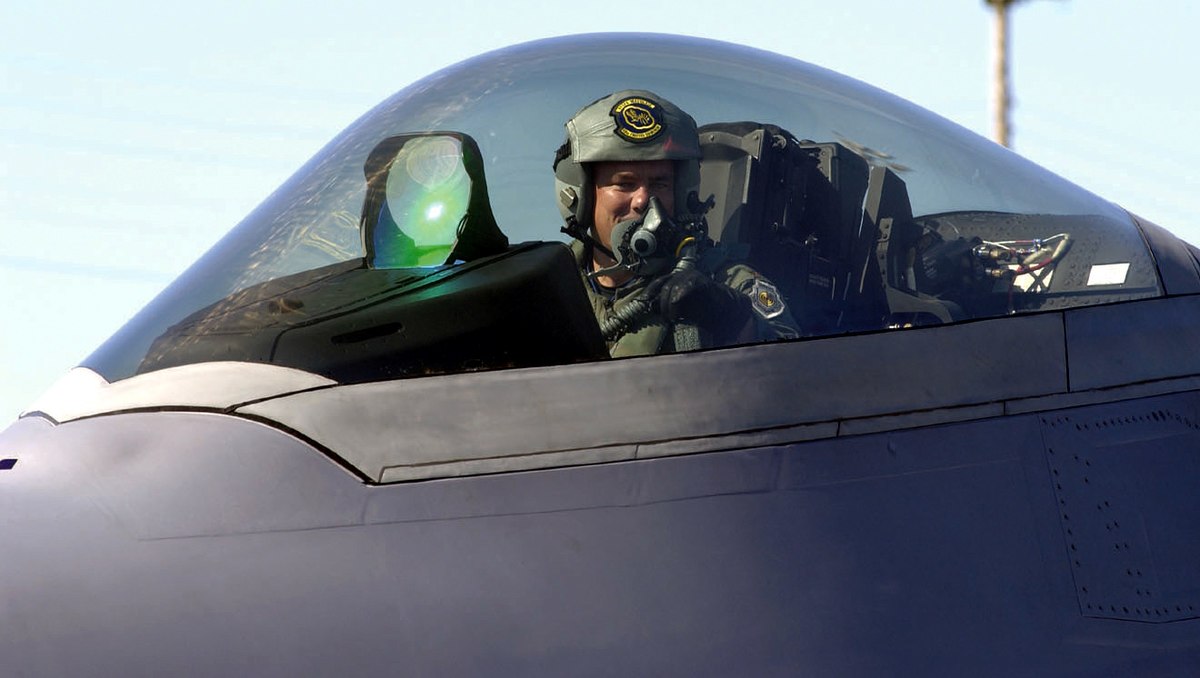
In May of 2016, a F-22 from the 95th Fighter Squadron was photographed at RAF Lakenheath in the UK with some peculiar markings just below the canopy. The markings typically represent the bombs or kills the plane has inflicted and they are actually a quite well-known tradition in the military. The specific silhouettes pictured on this Raptor represent Joint Direct Attack Munitions (JDAMs) which is indeed one of the two types of bombs the F-22 can carry in its weapons bay. This sighting is significant because of the small amount of action the F-22s have taken part in since becoming operational in 2005. The F-22 Raptors are responsible for only 2% of all weapons released during this air campaign, so spotting one that has seen combat is a lucky find!
F-22s Deployed Against Daesh
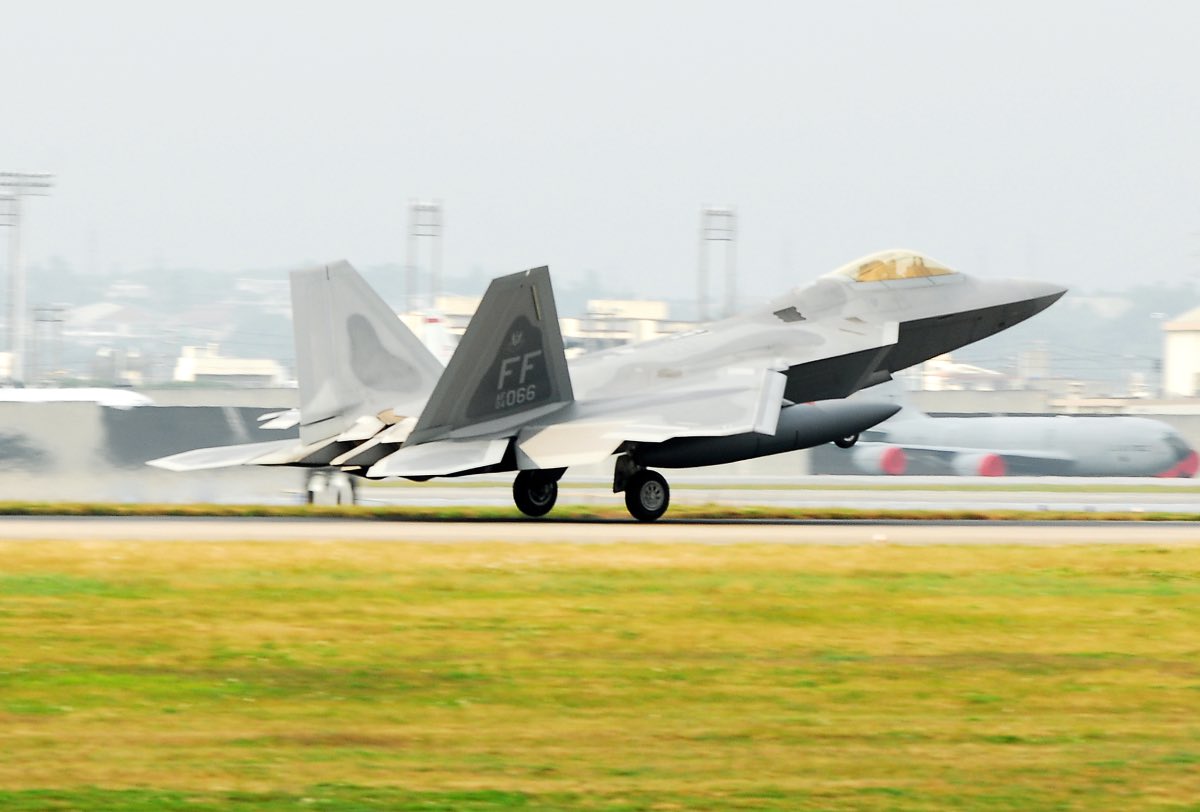
As of July 2016, the most up to date F-22s in the USAF are participating in the fight against Daesh from their station at Al Dhafra airbase in UAE. The fleet is assigned to the 90th Fighter Squadron of Joint Base Elmendorf-Richardson, Alaska and the F-22s have undergone the latest software updates giving them huge advances in radar, sensors and avionics. This Squadron is also the first to fly with the upgraded AIM-9X Sidewinder air to air missile. Another cool upgrade involves a capability known as “kinetic situational awareness” which involves the F-22 gathering information about an enemy aircraft via radar and sharing the “picture” with attack planes as well as other important parties. The F-22s remain an important asset for intelligence gathering across enemy lines but are now more capable than ever to come to the rescue when precise air to ground or air to air missions need to be completed.
Japan Wanted to Purchase F-22s
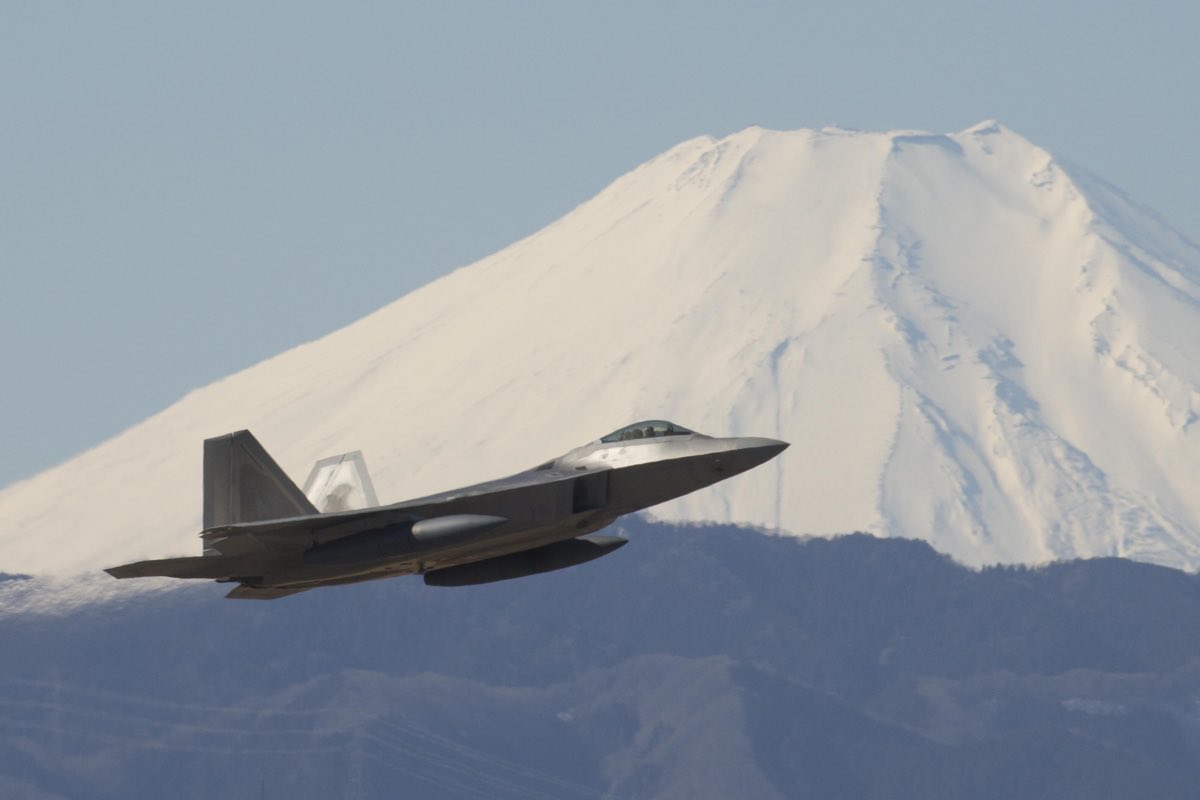
Due to China’s increasingly advanced air and naval weaponry, Japan has found itself in need of upgrading its own military arsenal. One of those needs is an answer to China’s Chengdu J-20 stealth fighter jet. Japan has started to gear up for production to replace their Mitsubishi F-2 with a new F-3, but what the Japanese Air Self-Defense Force would rather do is to purchase Lockheed’s F-22 Raptors. Unfortunately, the F-22 cannot be sold to anyone outside of the United States, so it looks like they’ll have to develop a new fighter. They may also consider purchasing the F-35s as they are available for purchase to US Allies and while slightly less capable, they get a wider variety of mission types done at a slightly lower cost.
The Future of the Air Force May Not Include Stealth Fighters At All
The F-22 is a proud part of the fifth generation fighter jet class, and it’s no surprise that work on a sixth generation has been in the works for some time. But in April of 2016, the Air Force unveiled a different type of plan to work towards in the future, one that is distancing itself from the fighter jet all together. The idea is to maintain air superiority and to do so, the Air Force has to think out of the box and abandon some of the long-held ideas of how an air force is comprised.
The Air Superiority 2030 Enterprise Capability Collaboration Team put together what is being called the “systems of systems” approach and it’s going to take us into outer and cyberspace to defend our nation. In fiscal year 2017, the Air Force will set aside money to explore options such as hypersonic weapons, autonomy and directed energy to integrate into our “family of systems”. Noticeably absent from the list is any form of traditional fighter jet, and according to Air Superiority 2030 lead Col. Alex Grynkewich, it’s not likely to reappear.

